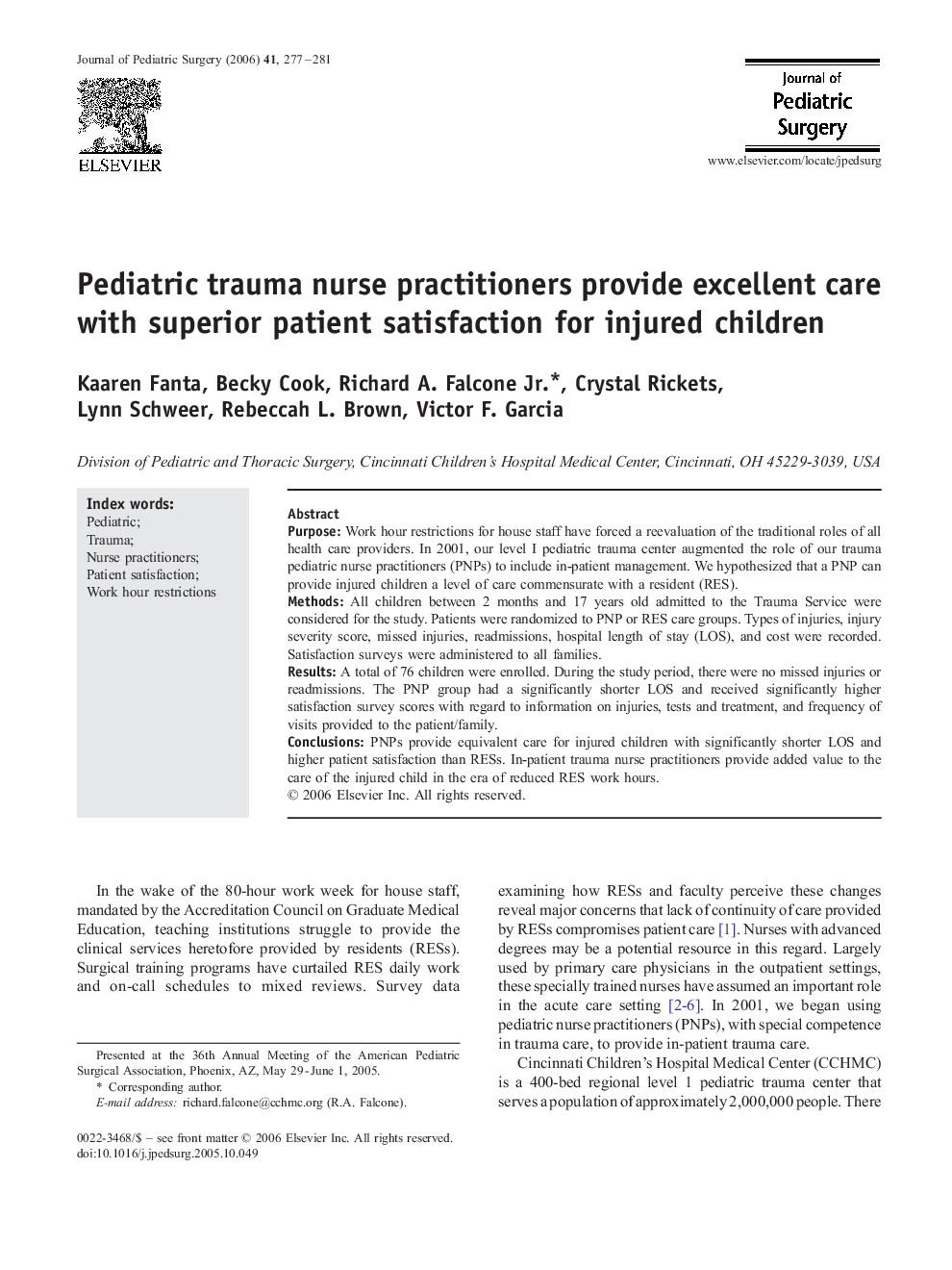| Article ID | Journal | Published Year | Pages | File Type |
|---|---|---|---|---|
| 4160814 | Journal of Pediatric Surgery | 2006 | 5 Pages |
PurposeWork hour restrictions for house staff have forced a reevaluation of the traditional roles of all health care providers. In 2001, our level I pediatric trauma center augmented the role of our trauma pediatric nurse practitioners (PNPs) to include in-patient management. We hypothesized that a PNP can provide injured children a level of care commensurate with a resident (RES).MethodsAll children between 2 months and 17 years old admitted to the Trauma Service were considered for the study. Patients were randomized to PNP or RES care groups. Types of injuries, injury severity score, missed injuries, readmissions, hospital length of stay (LOS), and cost were recorded. Satisfaction surveys were administered to all families.ResultsA total of 76 children were enrolled. During the study period, there were no missed injuries or readmissions. The PNP group had a significantly shorter LOS and received significantly higher satisfaction survey scores with regard to information on injuries, tests and treatment, and frequency of visits provided to the patient/family.ConclusionsPNPs provide equivalent care for injured children with significantly shorter LOS and higher patient satisfaction than RESs. In-patient trauma nurse practitioners provide added value to the care of the injured child in the era of reduced RES work hours.
